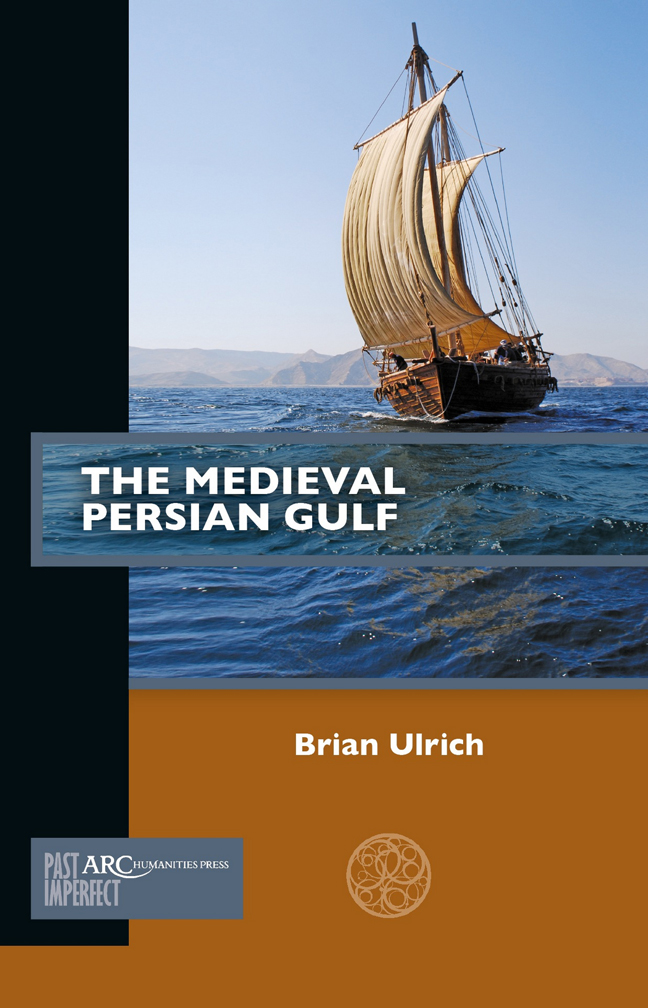Book contents
- Frontmatter
- Contents
- List of Illustrations
- Maps
- Timeline
- Introduction
- Chapter 1 Religious Diversity of the Early Islamic Era
- Chapter 2 Ethnic Diversity
- Chapter 3 The Society of Trade in the Early Islamic Period
- Chapter 4 New Trade Centres after 1000
- Chapter 5 Islamic Sects in the Late Medieval Gulf
- Chapter 6 Hormuz
- Conclusion
- Further Reading
Introduction
Published online by Cambridge University Press: 20 February 2024
- Frontmatter
- Contents
- List of Illustrations
- Maps
- Timeline
- Introduction
- Chapter 1 Religious Diversity of the Early Islamic Era
- Chapter 2 Ethnic Diversity
- Chapter 3 The Society of Trade in the Early Islamic Period
- Chapter 4 New Trade Centres after 1000
- Chapter 5 Islamic Sects in the Late Medieval Gulf
- Chapter 6 Hormuz
- Conclusion
- Further Reading
Summary
In 2003, the American animation studio Dreamworks released as an intended summer blockbuster Sinbad: Legend of the Seven Seas. One movie preview described it as “fortuitously set in the Mediterranean,” although the title character’s name was that of The Arabian Nights’ seafaring merchant who lived in Baghdad and set out on journeys from Basra. Although voice actor Brad Pitt was concerned that his Missouri accent was inappropriate for a Middle Eastern character, the filmmakers embraced it as a “mood lightener.” Sinbad’s heritage was thus obscured behind a story involving the Greek city-state of Syracuse on Sicily and Eris, Greek goddess of discord.
It is no accident, however, that even in the contemporary United States the paradigmatic legendary seafarer would come from the Persian Gulf. It is, after all, the oldest body of water for which we have clear evidence of human sailing, as it connected the southern reaches of Mesopotamia with Bahrain, then known as Dilmun, which figured in myth as a paradise. Also connected by sea was Oman, a source of copper, and ultimately the valley of the Indus River in modern Pakistan, itself a land of great seafarers and important trading partners of the Gulf. Just as today over one third of the world’s crude oil passes through the Gulf, throughout ancient and medieval times the waterway was a crucial conduit for Indian Ocean luxury products.
The purpose of this book is to acquaint readers with the history of the Gulf as it relates to themes of cultural and religious diversity and that often hemispheric long-distance maritime trade which is the precursor to globalization. It will show that the Gulf has had people of diverse ethnic backgrounds since long before the age of oil, and that people adhering to different religious traditions have sometimes been in conflict in the region, but also easily coexisted, especially at the level of common believers. It will also show the importance of the region’s long-distance trade to its culture and economy, as well as its significance for the Middle East more broadly.
Those whose image of Gulf history is focused on Bedouin and fisherfolk with small settlements along deserted coasts will, in fact, find those within.
- Type
- Chapter
- Information
- The Medieval Persian Gulf , pp. 1 - 8Publisher: Amsterdam University PressPrint publication year: 2023

